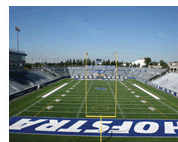The New Game Of Speed
If you were in Newport, Rhode Island, about 30 years ago, you would have witnessed a wonderful tradition of the bygone years of sailing.
For every America’s Cup competition, teams departed the harbor, passed impressive Fort Adams and then sailed out to the open sea. They would be followed by hundreds of vessels, large and small from yachts to dinghies, traversing the surf to the designated area of challenge and defense.
The America’s Cup is one of the oldest major trophy competitions in sports, dating from 1851. This year, a new “wave” was added to the race, and, at first, it faced considerable resistance from traditionalists. Eventually, though, the change triumphed and the America’s Cup entered a post-modern era in which speed and thrills were added to conventional sailing tactics.
Despite an 8-1 lead and a wealth of talent, Team New Zealand could not win the 34th America’s Cup. The victor in an astonishing comeback was Oracle Team USA. With millions upon millions of people watching on television and the internet, including many who had never stepped onto a sail boat, the outstanding outcome delivered the competition to a point of no return. This year’s regatta forever changed sailing.
A new class of boat, a wing-sailed catamaran, had been introduced to showcase the sport more attractively to television audiences. Though the sailing elite were critical of catamarans, the new boat class successfully created a lasting buzz for the competition across all kinds of media.
Expected to sail faster than the wind, the boats actually were faster than anticipated, leading to many exciting moments on the water and for a worldwide audience. Soon after the unbelievable win by Oracle Team USA, Australia’s Hamilton Island Yacht Club became the “Challenger of Record” for the 35th America’s Cup. New thrills certainly await us on the horizon.
Similar to this year’s regatta, a radical new idea, concept, or technology often will alter a business game plan. Selling change is not easy, and overcoming skepticism definitely will become part of the challenge. However, with planning, commitment and the promise (and delivery) of significant results, even you might win over some of the traditionalists in your line of work.
The teams competing in this year’s America’s Cup did it. Now, it is time for you to challenge your competition and hoist the cup!
Jim









